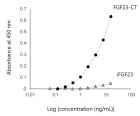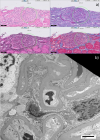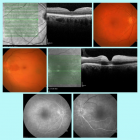Abstract
Case Report
Hazardous Effects of Malaria for Patients Residing in Low-probability Malaria Areas: A Case Report and Critiques of the Literature for Cerebral Malaria
Janvier Nzayikorera*
Published: 13 September, 2023 | Volume 4 - Issue 2 | Pages: 076-079
Despite decades of global and country commitments towards eradicating malaria, malaria remains the most hazardous parasitic disease and the most common cause of fever for humans, especially in tropical countries. Plasmodium falciparum causes 90% of malaria cases. Coma [Cerebral Malaria (CM)], acidosis, hypoglycemia, severe anemia, renal dysfunction, and pulmonary edema are the most common complications of malaria caused by Plasmodium falciparum and the most common cause of death related to malaria. People from less prevalent malaria areas are at high risk of developing these complications. A 16-year-old male from a low malaria transmission area was diagnosed with CM. Prior to developing CM, he was treated with Coartem. CM is a medical emergency and one of the forms of severe malaria. CM has high mortality and morbidity rates. Yet, international health-related agencies, funders, and policy-makers are unfamiliar with it. The continuous occurrence of CM validates the considerable need for global investment in malaria control and elimination programs. Early administration of Artesunate to all patients suspected of having severe malaria would reduce global malaria-related mortality and morbidity. Simple tests, such as the determination of malaria parasitic density either with thin or thick blood smears, may influence the proper management of all severe malaria cases. However, in clinical practice, the determination of malaria parasitic density is not routinely done. Further commitments are needed to ensure routine determination of malaria parasitic density for all suspected severe malaria cases. Moreover, further commitments are needed to guarantee the proper management of CM because it is a major cause of reversible encephalopathy in tropical countries.
Read Full Article HTML DOI: 10.29328/journal.jcmhs.1001038 Cite this Article Read Full Article PDF
Keywords:
Malaria; Cerebral malaria; Severe malaria; Complicated malaria; Plasmodium falciparum; Low transmission malaria areas
References
- Dennis JLKL, Hauster SL. Jameeson JL, Fauci AS, Longo DL, ed. Harrison’s Principles of Medicine. 19th Edition, McGraw-Hill Companies. Inc. 2015.
- WHO global malaria programme World malaria report, WHO Libr. Cat. Data. 2014. https://www.who.int/publications-detail-redirect/9789241564830.
- Global technical strategy for malaria 2016–2030, World Heal. Organ. 2016; 1–35. https://www.who.int/publications-detail-redirect/9789240031357.
- Word Malaria Report 2021. 2021. https://www.who.int/teams/global-malaria-programme/reports/world-malaria-report-2021.
- World malaria report 2020: 20 years of global progress and challenges. Geneva: World Health Organization; 2020. Licence: CC BY-NC-SA 3.0 IGO. 2020. https://www.who.int/teams/global-malaria-programme/reports/world-malaria-report-2020.
- Chen Q, Schlichtherle M, Wahlgren M. Molecular aspects of severe malaria, Clin. Microbiol. Rev. 2000; 13:439–450. https://doi.org/10.1128/CMR.13.3.439-450.2000.
- World Malaria Report 2017. 2017.
- Pasvol G. The treatment of complicated and severe malaria, Br. Med. Bull. 2005; 75–76:29–47. https://doi.org/10.1093/bmb/ldh059.
- Ministry of health, annual health sector performance report financial year 2020/21. 2021.
- T Republic. Intergrated management of malaria training, 2019. https://files.aho.afro.who.int/afahobckpcontainer/production/files/3_Intergrated_management_of_malaria_training_Health_workers_manual.pdf.
- Valentim M. Cerebral malaria. 2018; 8:216–221. https://doi.org/10.15406/jnsk.2018.08.00313.
- Dondorp AM. Pathophysiology, clinical presentation and treatment of cerebral malaria, Neurol. Asia. 2005; 67–77. http://www.neurology-asia.org/articles/20052_067.pdf.
- A Practical Handbook Management of Severe Malaria, 3rd ed., World Health Organization, 2012. https://apps.who.int/iris/handle/10665/79317.
- Alister GC. M. Fadzli, K. Mustaffa, R.P. Pradeep, Cytoadherence and Severe Malaria, Malays J Med Sci. 2012; 19:5-18. https://www.ncbi.nlm.nih.gov/pmc/articles/PMC3431742/.
- Department: Health Republic of South Africa, National Guidelines for the Treatment of Malaria, South Africa. 2019. https://www.nicd.ac.za/wp-content/uploads/2017/03/National-Guidelines-for-Malaria-Treatment-SEPTEMBER-2019-Update-WITH-FRONT.pdf.
- Mankhambo L, Phiri A, Mallewa M, Molyneux M. Management of severe malaria, Futur. Med. 2010; 7:27–38. https://doi.org/10.2217/thy.09.81.
- WHO Guidelines for malaria, Geneva: World Health Organization; 2023 (WHO/UCN/GMP/ 2023.01). License: CC BY-NC-SA 3.0 IGO, WHO. 2023. http://apps.who.int/bookorders.
- WHO Guidelines for Malaria - 13 July 2021, World Heal. Organ. 2021; 5–65.
Figures:
Similar Articles
-
Hazardous Effects of Malaria for Patients Residing in Low-probability Malaria Areas: A Case Report and Critiques of the Literature for Cerebral MalariaJanvier Nzayikorera*. Hazardous Effects of Malaria for Patients Residing in Low-probability Malaria Areas: A Case Report and Critiques of the Literature for Cerebral Malaria. . 2023 doi: 10.29328/journal.jcmhs.1001038; 4: 076-079
Recently Viewed
-
Breast Imaging Services Utilization Trends Across Private and Government-Insured Patients in a National Radiology PracticeAndrew K Hillman*,Phil Ramis,Patrick Nielsen,Sophia N Swanston,Dana Bonaminio,Eric M Rohren. Breast Imaging Services Utilization Trends Across Private and Government-Insured Patients in a National Radiology Practice. J Clin Med Exp Images. 2025: doi: 10.29328/journal.jcmei.1001037; 9: 020-027
-
Misoprostol Usage in the Kingdom of Bahrain: A Retrospective StudyMaryam Alsalem*,Hosni Malas,Gulmeen Raza,Rehab Ismael. Misoprostol Usage in the Kingdom of Bahrain: A Retrospective Study. Clin J Obstet Gynecol. 2025: doi: 10.29328/journal.cjog.1001196; 8: 092-095
-
The role of denial on emotional correlates of childhood trauma in a non-clinical populationSanja Krvavac*,Billy Jansson. The role of denial on emotional correlates of childhood trauma in a non-clinical population. Arch Psychiatr Ment Health. 2022: doi: 10.29328/journal.apmh.1001043; 6: 040-047
-
Role of toll-like receptors and their ligands in adipocyte secretionA Mishra*,AV Shestopalov,AM Gaponov,IA Alexandrov,SA Roumiantsev. Role of toll-like receptors and their ligands in adipocyte secretion. Ann Proteom Bioinform. 2021: doi: 10.29328/journal.apb.1001012; 5: 001-007
-
Pigeonpea sterility mosaic virus a green plague-Current status of available drug and new potential targetsNisha Singh*,Bhawna Narula,Megha Ujinwal,Sapna Langyan. Pigeonpea sterility mosaic virus a green plague-Current status of available drug and new potential targets. Ann Proteom Bioinform. 2021: doi: 10.29328/journal.apb.1001013; 5: 008-026
Most Viewed
-
Feasibility study of magnetic sensing for detecting single-neuron action potentialsDenis Tonini,Kai Wu,Renata Saha,Jian-Ping Wang*. Feasibility study of magnetic sensing for detecting single-neuron action potentials. Ann Biomed Sci Eng. 2022 doi: 10.29328/journal.abse.1001018; 6: 019-029
-
Evaluation of In vitro and Ex vivo Models for Studying the Effectiveness of Vaginal Drug Systems in Controlling Microbe Infections: A Systematic ReviewMohammad Hossein Karami*, Majid Abdouss*, Mandana Karami. Evaluation of In vitro and Ex vivo Models for Studying the Effectiveness of Vaginal Drug Systems in Controlling Microbe Infections: A Systematic Review. Clin J Obstet Gynecol. 2023 doi: 10.29328/journal.cjog.1001151; 6: 201-215
-
Causal Link between Human Blood Metabolites and Asthma: An Investigation Using Mendelian RandomizationYong-Qing Zhu, Xiao-Yan Meng, Jing-Hua Yang*. Causal Link between Human Blood Metabolites and Asthma: An Investigation Using Mendelian Randomization. Arch Asthma Allergy Immunol. 2023 doi: 10.29328/journal.aaai.1001032; 7: 012-022
-
Impact of Latex Sensitization on Asthma and Rhinitis Progression: A Study at Abidjan-Cocody University Hospital - Côte d’Ivoire (Progression of Asthma and Rhinitis related to Latex Sensitization)Dasse Sery Romuald*, KL Siransy, N Koffi, RO Yeboah, EK Nguessan, HA Adou, VP Goran-Kouacou, AU Assi, JY Seri, S Moussa, D Oura, CL Memel, H Koya, E Atoukoula. Impact of Latex Sensitization on Asthma and Rhinitis Progression: A Study at Abidjan-Cocody University Hospital - Côte d’Ivoire (Progression of Asthma and Rhinitis related to Latex Sensitization). Arch Asthma Allergy Immunol. 2024 doi: 10.29328/journal.aaai.1001035; 8: 007-012
-
An algorithm to safely manage oral food challenge in an office-based setting for children with multiple food allergiesNathalie Cottel,Aïcha Dieme,Véronique Orcel,Yannick Chantran,Mélisande Bourgoin-Heck,Jocelyne Just. An algorithm to safely manage oral food challenge in an office-based setting for children with multiple food allergies. Arch Asthma Allergy Immunol. 2021 doi: 10.29328/journal.aaai.1001027; 5: 030-037

If you are already a member of our network and need to keep track of any developments regarding a question you have already submitted, click "take me to my Query."
















































































































































